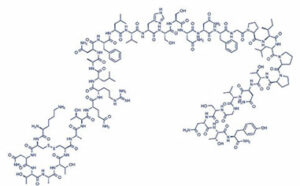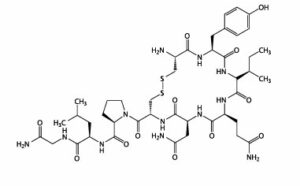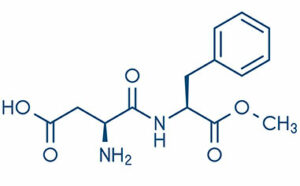
In the world of peptides, there exists a wide array of molecules, each differing in the number of amino acid residues they contain. Amino acids within peptide molecules are connected by peptide bonds (-C(O)NH-).
Peptide molecules can range from containing as few as 2 to as many as 100 amino acid residues. Their molecular mass typically falls within the 5000-10000 Dalton range.
Long-chain peptides, known as polypeptides, may consist of hundreds of amino acid residues, surpassing 10000 Daltons and, in some cases, reaching 100000 Daltons. Such polypeptides are classified as proteins.
It’s important to note that all proteins are, without exception, peptides comprised of numerous amino acid residues. Therefore, peptides represent a broader category than proteins. Not all peptides, however, qualify as proteins.
As mentioned earlier, peptides vary based on the number of amino acids they contain, leading to the following classifications:



By the way, the well-known hormone insulin is a peptide with 51 amino acid residues in its sequence, while growth hormone is a protein composed of 191 amino acid residues.
Scientists have utilized advanced technologies to create short peptides in laboratory settings, containing as few as two to four amino acid residues.
Short peptides represent the functional core of natural protein molecules, offering enhanced efficiency at lower concentrations.
Short peptides are more efficiently absorbed by the body compared to polypeptides and proteins. Most long peptides commonly found in sports nutrition undergo degradation in the stomach and intestines, failing to deliver the desired effects.
Imagine eating boiled chicken breast, which contains a unique chicken protein that exists only in chickens. Our bodies cannot directly assimilate chicken molecules into our muscles, as humans have entirely different proteins characteristic to them.
Here’s what occurs: Special substances in the stomach and intestines “break down” proteins into individual components (amino acids), which serve as the building blocks for proteins in all living organisms. Amino acids are used by our bodies for various purposes, such as muscle building, organ regeneration, and hormone production.
The process of breaking down proteins into individual amino acids and their subsequent utilization in the body is called absorption. Digesting protein, breaking it down, and absorbing it are time-consuming and labor-intensive processes.
In contrast, short-chain peptides, upon entering the stomach, quickly pass into the bloodstream through capillary walls, bypassing the digestive processes.
In summary, short peptides offer several advantages over longer molecules, making them a favorable choice for various applications, particularly in the realm of health and fitness. Their efficient absorption, versatility, and suitability for use at lower concentrations make them a promising option for individuals seeking optimal wellness.